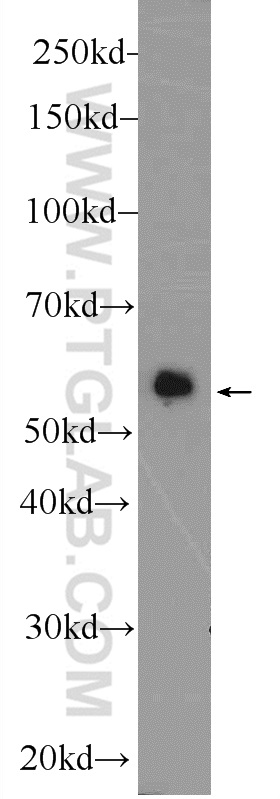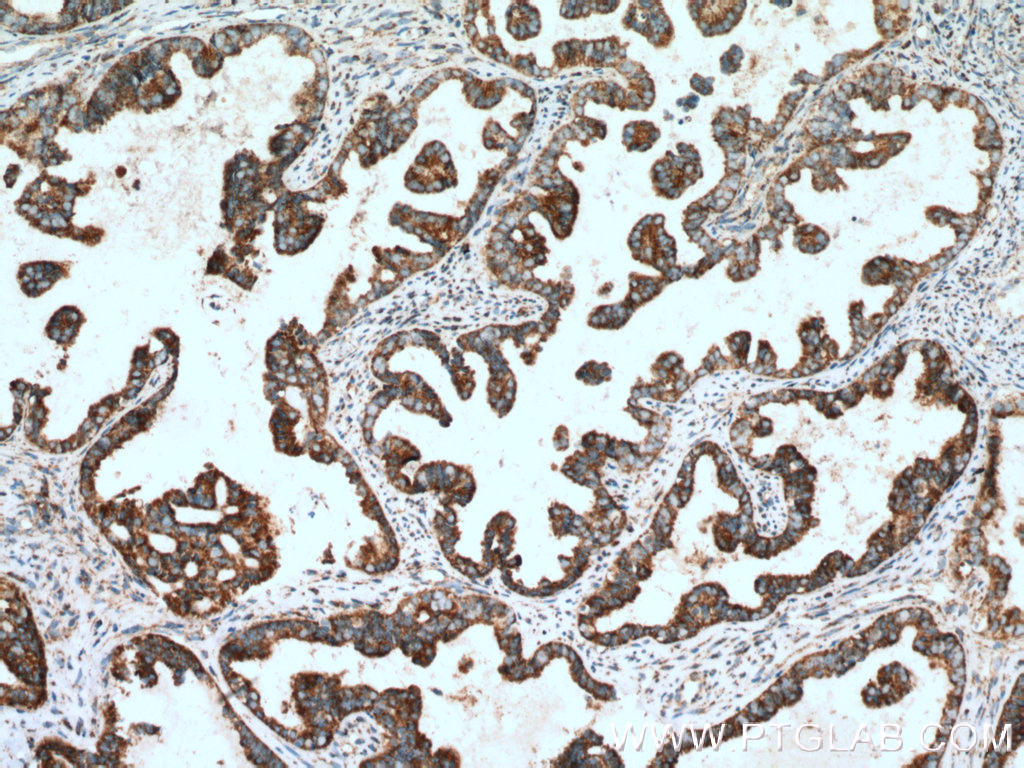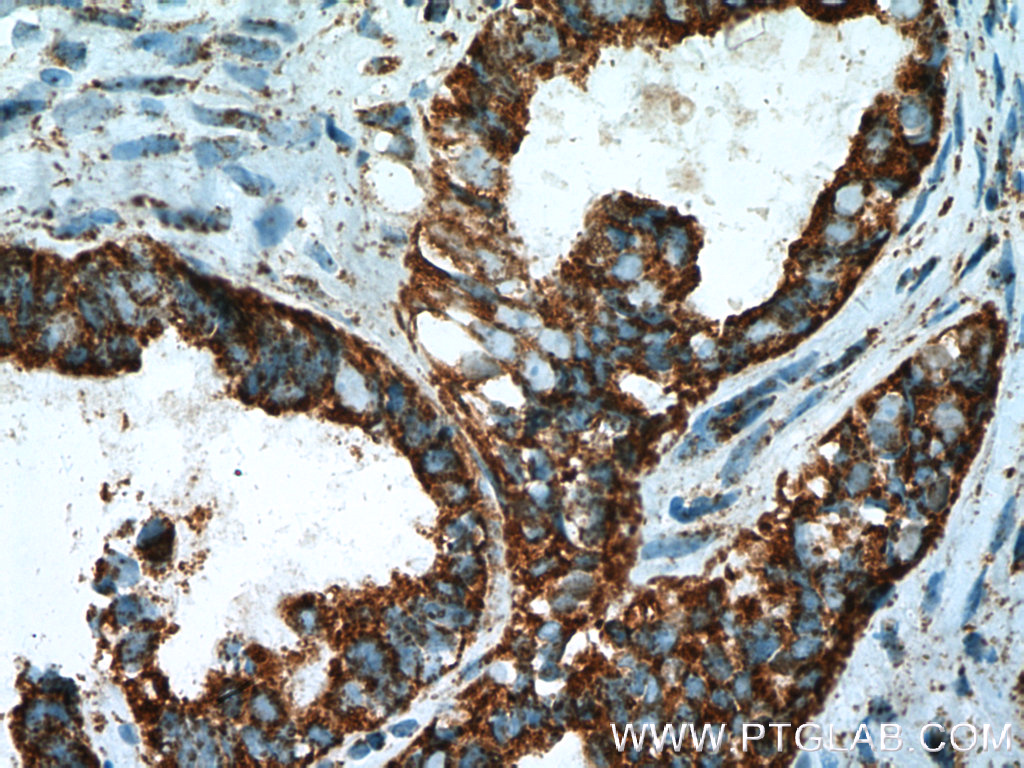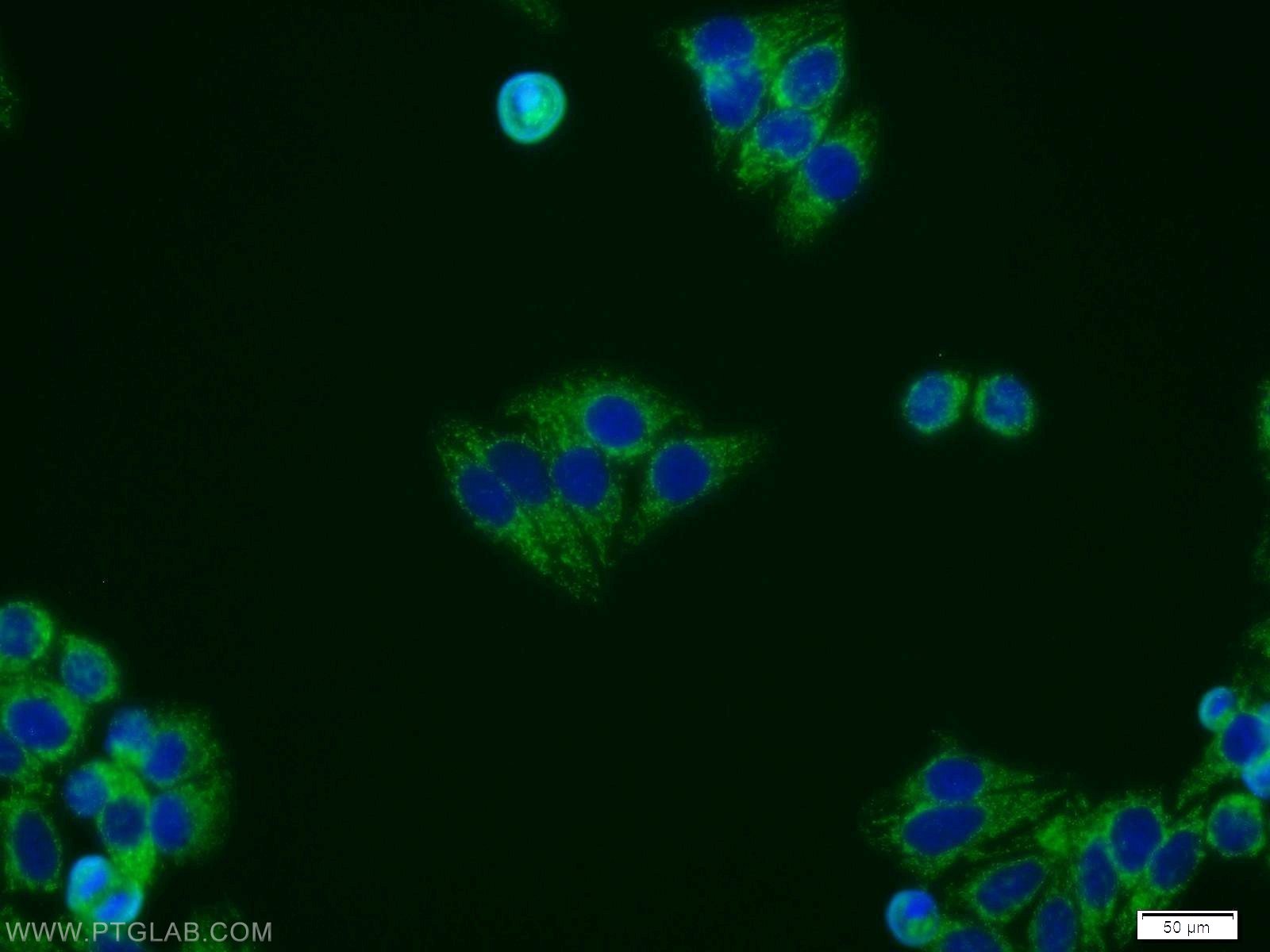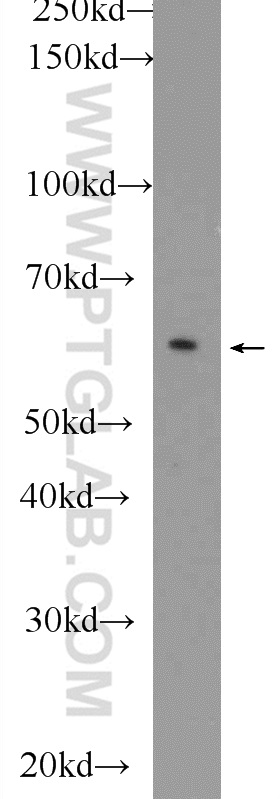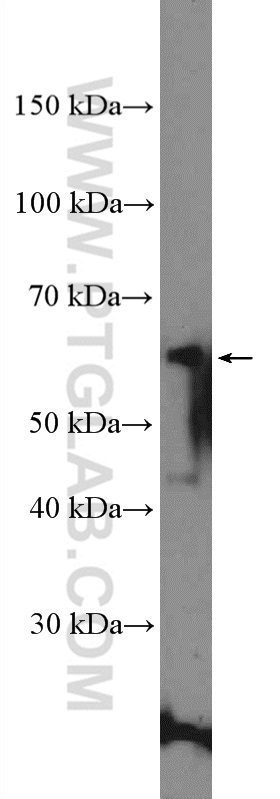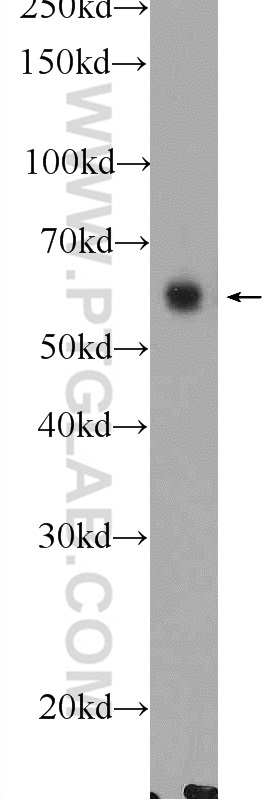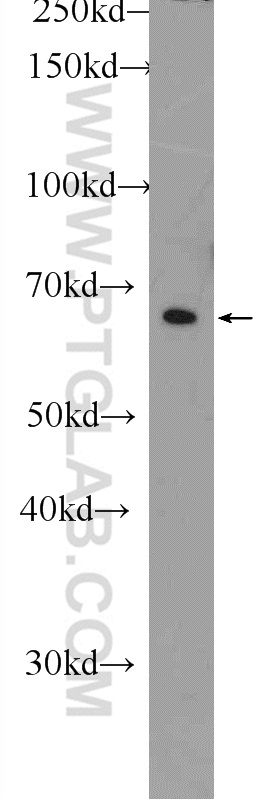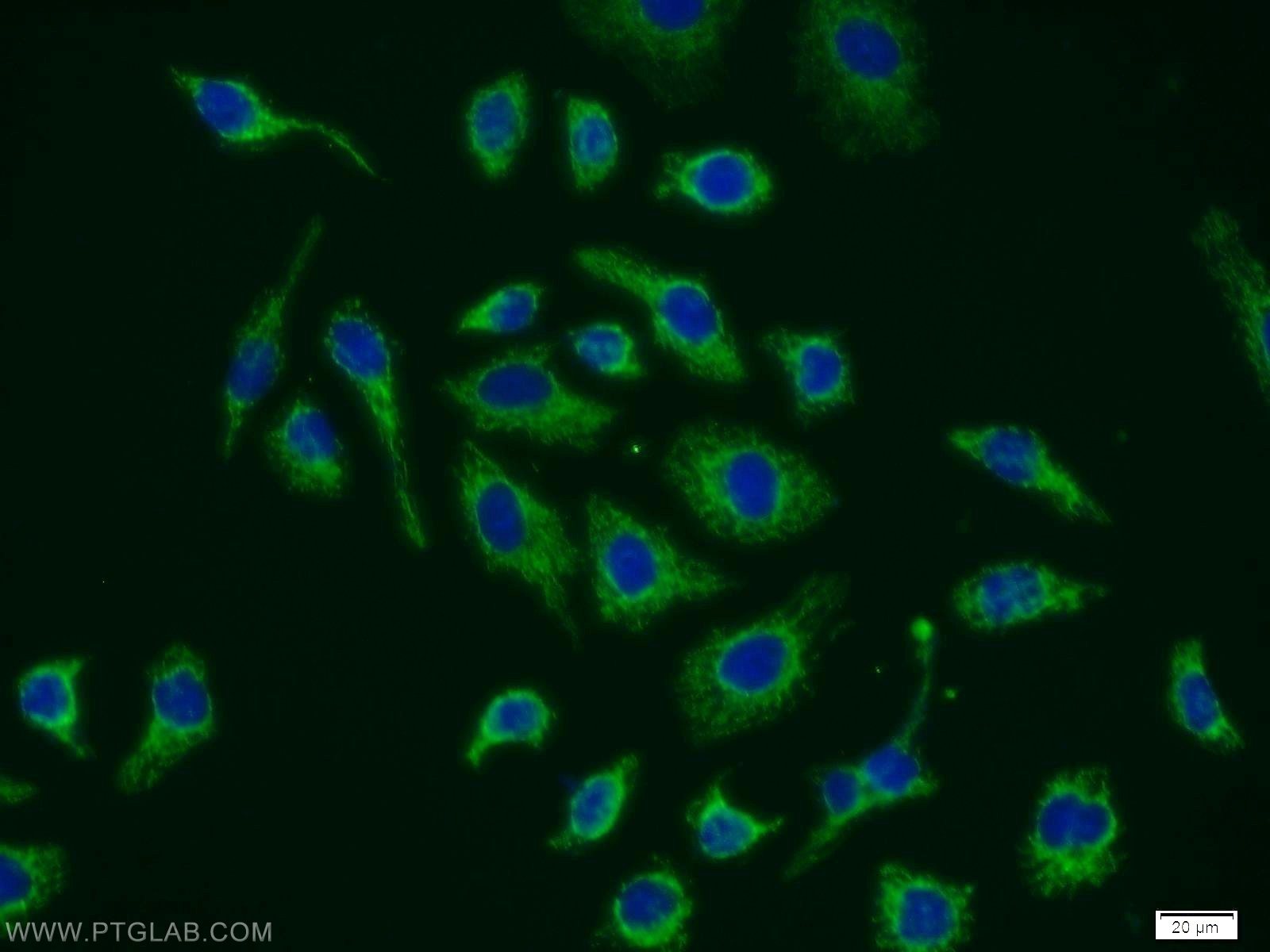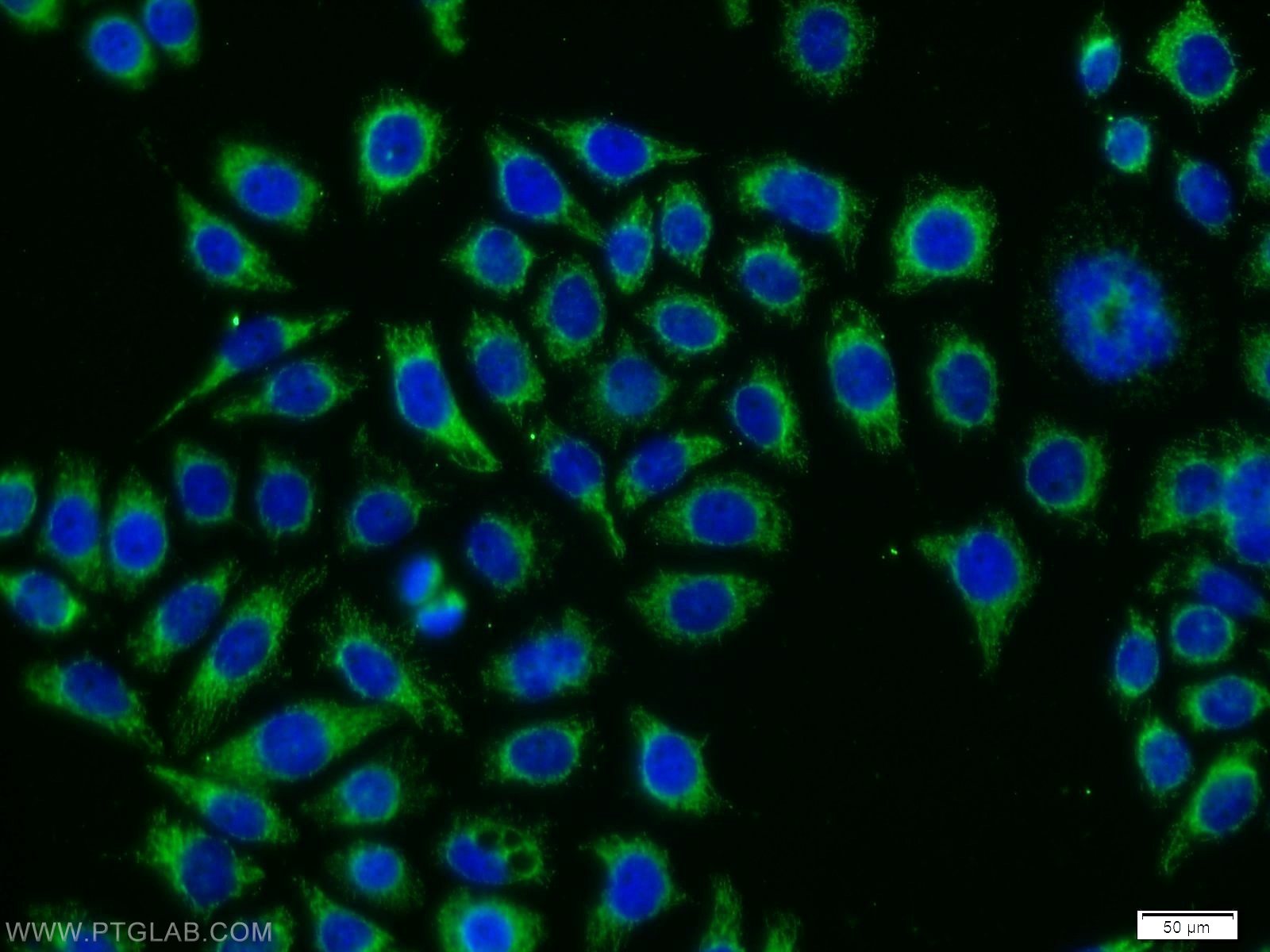验证数据展示
经过测试的应用
| Positive WB detected in | HepG2 cells, A2780 cells, MCF-7 cells, mouse heart tissue, PC-3 cells |
| Positive IHC detected in | human ovary tumor tissue Note: suggested antigen retrieval with TE buffer pH 9.0; (*) Alternatively, antigen retrieval may be performed with citrate buffer pH 6.0 |
| Positive IF/ICC detected in | HepG2 cells, MCF-7 cells, PC-3 cells |
推荐稀释比
| Application | Dilution |
|---|---|
| Western Blot (WB) | WB : 1:500-1:1000 |
| Immunohistochemistry (IHC) | IHC : 1:50-1:500 |
| Immunofluorescence (IF)/ICC | IF/ICC : 1:10-1:100 |
| It is recommended that this reagent should be titrated in each testing system to obtain optimal results. | |
| Sample-dependent, Check data in validation data gallery. | |
产品信息
11568-1-AP targets DPP9 in WB, IF, IHC, ELISA applications and shows reactivity with human, mouse samples.
| Tested Applications | WB, IF, IHC, ELISA Application Description |
| Tested Reactivity | human, mouse |
| Immunogen | DPP9 fusion protein Ag2145 种属同源性预测 |
| Host / Isotype | Rabbit / IgG |
| Class | Polyclonal |
| Type | Antibody |
| Full Name | dipeptidyl-peptidase 9 |
| Synonyms | dipeptidyl peptidase 9, Dipeptidyl peptidase IX, DP9, DPLP9, DPP IX, DPP9, DPRP 2, DPRP2 |
| Calculated Molecular Weight | 863 aa, 98 kDa |
| Observed Molecular Weight | 98 kDa |
| GenBank Accession Number | BC037948 |
| Gene Symbol | DPP9 |
| Gene ID (NCBI) | 91039 |
| Conjugate | Unconjugated |
| Form | Liquid |
| Purification Method | Antigen affinity purification |
| UNIPROT ID | Q86TI2 |
| Storage Buffer | PBS with 0.02% sodium azide and 50% glycerol pH 7.3. |
| Storage Conditions | Store at -20°C. Stable for one year after shipment. Aliquoting is unnecessary for -20oC storage. |
背景介绍
Dipeptidyl peptidase 9(DPP9), is a member of the S9B family in clan SC of the serine proteases. DPP9 has 3 isoforms with MW of 95, 98 and 101 kDa. DPP9 is involved in the regulation of the activity of their substrates and have been linked to a variety of diseases including type 2 diabetes, obesity and cancer.
